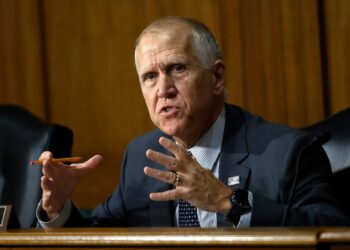Last updated on November 17th, 2022 at 12:35 pm
In the wake of the collapse of TerraUSD, an algorithmic stablecoin, it was widely expected that financial regulators would take swift action to set some ground rules for stablecoins. (See “Terra LUNA 99% Crash: How Did It All Go Wrong?” for more on the TerraUSD collapse.)
Therefore, it was no surprise that the DFS, one of the few U.S. regulators to have developed any sort of framework for the crypto sector, was the first to act.
On 8 June 2022, the New York State’s Department of Financial Services (DFS) issued a Regulatory Guidance on Baseline Criteria for USD-Backed Stablecoins.
The Guidance applies to entities licensed by the DFS to engage in virtual currency business activity (so-called “BitLicense”) under 23 NYCRR Part 200 or Chartered as ‘Limited Purpose Trust Companies’ under the New York Banking Law that issue U.S. Dollar-backed stablecoins under the supervision of the DFS.
With this Regulatory Guidance, the DFS sets out the “baseline requirements” to apply to USD stablecoins issued by entities supervised by the DFS. Nevertheless, as is typical of financial regulators, the DFS reserved its right to:
“impose different requirements on any particular stablecoin arrangement backed by the USD and will require clear and conspicuous disclosure of any such different requirements.”
Below is a summary of the Regulatory Guidance issued by the DFS.
Summary of the new requirements
USD-backed stablecoins must be fully backed by a Reserve of assets
The stablecoin must be fully backed by a Reserve of assets, i.e., on a one-to-one basis. The issuing firm must ensure that the market value of the Reserve is at least equal to the nominal value of all outstanding units of the stablecoin at the end of each business day.
In reality, since stablecoin market prices tend to deviate slightly from the U.S. dollar even for trusted stablecoins such as USDT and USDC, this requirement is likely to mean that issuers will need to over-collateralize their reserve assets.
They must be redeemable in a timely fashion at par with the U.S. dollar
The issuer must adopt clear policies around redemption, which will need to be approved in advance by DFS. The DFS states that such policies must:
“confer on any lawful holder of the stablecoin a right to redeem units of the stablecoin from the Issuer in a timely fashion at par for the U.S. dollar.”
As such, USD-backed stablecoins must be readily convertible into fiat US dollars. This is a vital protective measure for holders of USD-backed stablecoins, shielding them from the volatility witnessed in the wider cryptocurrency space.
Importantly, redemption will be considered “timely” only if completed within two full business days.
The Reserve assets must be segregated from the issuer’s proprietary assets
The assets in the Reserve must be segregated from the proprietary assets of the issuing entity. This critical requirement creates a similar level of protection afforded to financial assets in the traditional finance (TradFi) sector.
This is a particularly timely requirement given the recent disclosure by the U.S. headquartered centralized exchange, Coinbase, that in the event of its insolvency, cryptoassets held in customers’ accounts may not be segregated from the firm’s own assets and may therefore be subjected to permanent losses in such a scenario.
Although a standard disclosure is required by the U.S. Securities and Exchange Commission (U.S. SEC), the disclosure sent shockwaves through the crypto world, prompting social media explanations by senior Coinbase officials.
The Reserve assets must be held in custody with U.S. state or federally chartered depository institutions and/or asset custodians
In order to properly segregate Reserve assets from the proprietary assets of the stablecoin issuing entity, the Reserve assets must be held in custody with U.S. state or federally chartered depository institutions and/or asset custodians (i.e.,U.S. banks and custody banks).
Only certain assets are eligible as Reserve assets
The only types of assets that are eligible to be included as Reserve assets are:
- U.S. Treasury Bills acquired by the Issuer three months or less from their respective maturities.
- Reverse repurchase agreements fully collateralized by U.S. Treasury bills, U.S. Treasury notes, and/or U.S. Treasury bonds on an overnight basis, subject to DFS-approved requirements concerning over-collateralization.
- Government money-market funds, subject to DFS-approved caps on the fraction of Reserve assets to be held in such funds and DFS-approved restrictions on the funds.
- Deposit accounts at U.S. state or federally chartered depository institutions, subject to DFS-approved restrictions.
The Reserve must be subject to monthly and yearly audits
The DFS requires “independent audits” to be carried out on the Reserve assets of a USD-backed stablecoin in order to ensure that they meet the DFS’ requirements and the assertions made by issuers. The auditor must be an independent U.S. licensed Certified Public Accountant.
The independent audit must take place at least once every month, and also annually.
The results of the audits must be published within 30 days for the monthly audits, and 120 days for the annual audits.
Implementation timeline
Surprisingly, the DFS is not wasting any time in applying these new requirements and is arguably not giving affected firms sufficient time to adjust.
The DFS expects issuers that currently issue U.S. dollar-backed stablecoins under DFS supervision to comply with the new Regulatory Guidance within three months.
International developments on stablecoins
Financial Stability Board
In January 2022, the Financial Stability Board (FSB) published a Progress Report providing a status update on the regulatory implementation of the FSB’s 2020 High-Level Recommendations on what it termed “Global Stablecoin” arrangements.
It also reiterated its principle of “same economic activities, same regulation” and highlighted the risk of divergence in jurisdictional approaches to stablecoins.
United Kingdom
In April 2022, the UK government announced its intention to regulate stablecoins, thereby paving the way for their use as a recognized form of payment in the UK. This was described as part of broader plans to make the UK a “global hub for cryptoasset technology and investment”.
Like the FSB, the UK government said it also had an objective of “same risk, same regulatory outcome”, and wished to prevent “opportunities for regulatory arbitrage between traditional e-money and stablecoins”.
Japan
On 3 June 2022, Japan passed a law legalizing stablecoins, defining them as “digital money.” The bill was initially drafted by Japan’sJapan’s Financial Services Agency (FSA) in December 2021.
Under Japanese law, stablecoins must be linked to the yen or another legal tender, guaranteeing holders the right to redeem them at face value. Also, stablecoins can now only be issued by licensed banks, registered money transfer agents, and trust companies.
In Conclusion,
- USD stablecoins must be backed by specified Reserved assets on a 1=1 basis
- They must be redeemable in a timely fashion at par for the U.S. dollar
- Reserve assets must be segregated from the issuer’s proprietary assets
- Reserve assets must be held in custody with U.S. banks or custodians
- Reserve assets must be subject to monthly and yearly audits
If you would like to read more articles like this, visit DeFi Planet and follow us on Twitter, LinkedIn, Facebook, and Instagram.
“Take control of your crypto portfolio with MARKETS PRO, DeFi Planet’s suite of analytics tools”





















